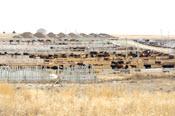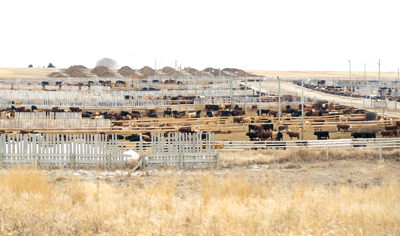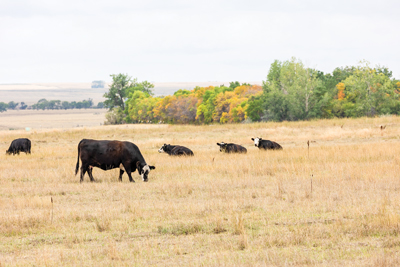
Do carbon credits have a future on prairie farms?
By Emily Croft
Carbon sequestration has become a common topic in agriculture, both in terms of environmental responsibility and as a proposed new opportunity for farmers to bolster their income. These additional profits would come from carbon credit or carbon offset programs.
As financial programs attached to carbon production and sequestration are discussed, there are still many questions from producers about which practices are eligible, how they are regulated, and how the value is determined.
There could also be producer concerns about the on-farm feasibility and the overall long-term economic sustainability of carbon sequestration practices.
Better Farming asked government representatives from Alberta and Saskatchewan, and other professionals, about what these programs look like in different provinces and what their future in agriculture might be. (Editor: We also reached out to contacts in Manitoba, but had not received replies by press time.)
What are carbon credits?
With differences in programs and regulations across provinces, the definitions of carbon credits and carbon offset may differ. This can contribute to the confusion and hesitancy of Prairies producers to participate in these programs.
Sven Anders, professor of Resource Economics & Environmental Sociology at University of Alberta says that, in general, carbon credits are tradable certificates built around carbon sequestration activities. Whoever sequesters the carbon can then sell that certificate to a carbon emitter.
A spokesperson for the Saskatchewan Ministry of Environment states that in Saskatchewan, carbon credits and carbon offset have the same definitions.
“The terms carbon credit and carbon offset can be used interchangeably. A carbon offset or credit is a tradable unit standing for one tonne of avoided GHG emissions or emissions removed from the atmosphere,” says the Saskatchewan Ministry of Environment.
“A carbon offset program is a system used to generate credits using numerous internationally recognized rules, often called standards, methodologies, or protocols.”
This varies from Alberta’s program, in which carbon credits and carbon offset are different. Alberta’s carbon offsets are regulated under the Alberta Emission Offset System, which is the largest regulation program for carbon offset in Canada.
“Carbon credits are ‘permissible emissions’ issued to organizations by a regulatory body,” says RJ Sigurdson, the Alberta Minister of Agriculture and Irrigation, in a recent statement shared with Better Farming.
He clarifies that the number of carbon credits a company receives dictates the maximum amount of carbon dioxide the company can emit based on the ‘cap’ system.
“Carbon offsets are NOT the same as carbon credits,” says Minister Sigurdson.
“Carbon offsets are created as ‘compensation’ to an organization that invests in a carbon capture or emissions reduction project. One carbon offset represents one tonne of CO2e that has been removed from the atmosphere.”
Carbon offset can then be marketed to carbon emitters, which is where Prairie farmers have an opportunity to participate in the carbon market.
What farm practices qualify for carbon offset creation and are they feasible for producers to implement?
Do they work on-farm?
As the agriculture industry is encouraged to reduce carbon emissions, a few practices that have become more common on Prairie farms could also qualify as a carbon offset.

Generally, the producer would implement a new practice that sequesters carbon, it would be verified by a third party, and then the offset would become available for purchase by a company to offset their own carbon production.
The Saskatchewan Ministry of Environment lists a few practices that could be eligible for carbon offset.
“Providing they meet program requirements and obtain third-party verification fertilizer reduction, improved water management through irrigation, reduced tillage, improved residue management, agroforestry, crop rotations, cover crops, and cattle grazing are eligible,” says the Saskatchewan Ministry of Environment.
“Each offset program oversees projects registered within their respective programs via protocols and standards. This includes requiring third-party verification to meet International Standard Agency Standard 14064-1:2018, which specifies principles and requirements at the organization level for the quantification and reporting of GHG emissions and removals.”
After verification, the credits can then be listed for sale.
“A seller lists their credits on the program’s registry with documentation outlining the project’s scope and verification documents,” says the Saskatchewan Ministry of Environment.
In the international market commonly used by Saskatchewan carbon offset producers, there are currently more credits or offset available than there are buyers.
“Therefore, working with a recognized program with a good reputation is essential when creating high-quality credits that buyers seek,” explains the Saskatchewan Ministry of Environment.
Alberta has its own regulation system that has defined protocols for farm activities that generate carbon offsets.
“Alberta currently has three approved protocols available under Technology Innovation and Emissions Reduction (TIER) Regulations for use in agriculture,” says Minister Sigurdson in his statement.
The first is the Agricultural Nitrous Oxide Emission Reduction Protocol (NERP).
“The NERP is based on improving nitrogen fertilizer efficiency. NERP uses 4R Nutrient Stewardship, an internationally recognized program that advocates for responsible and effective management of nutrient resources,” explains Sigurdson.
The second protocol is the Reducing Greenhouse Gas Emissions from Fed Cattle Protocol, which focusses on cattle in feedlots.
“It rewards a reduction in the time cattle spend in the feedlot through improved efficiencies. The greenhouse gas reductions are variable, and the offsets are based on an improvement compared with a three-year baseline. It also provides operations with the benefit of saving costs on feed.”
The final protocol is the Selection for Low Residual Feed Intake Markers in Beef Cattle Protocol which encourages development of efficient cattle genetics.

“This protocol focuses on breeding cattle for more efficient feed use to reduce methane and nitrous oxide. It also provides operations with the benefit of saving costs on feed,” says Sigurdson.
For programs in both provinces, record-keeping is extremely important to ensure a smooth verification process. The records required will also vary based on the practice or protocol being applied. A willingness and ability to keep extremely detailed records may be a consideration for producers who are looking into carbon offset production.
Another factor in determining if carbon offset production works on-farm is assessing how much value carbon offsets will actually bring to the operation.
“Value is determined based on what the buyer is willing to pay, and the seller is willing to accept. These negotiations are done over the table and behind closed doors.
“There are markets available that list credits in a stock exchange format, allowing a quasi-free market to play its role. However, there are additional fees for this service,” says the Saskatchewan Ministry of Environment.
In Alberta, where the Alberta Technology Innovation and Emissions Reduction (TIER) Regulation system is the cornerstone of the pricing system, “value is determined by the number of offsets created by the farm and ultimately the project,” says Minister Sigurdson.
“When the offsets are sold, the farmer will receive payment – either based on the contract they will have signed with the aggregator or from the registry directly if they listed their own project.”
The scale and type of farm will determine which protocols and practices are possible, and how much value producers can create through the generation of carbon offsets.
Concerns remain
Carbon offset production holds opportunity for a variety of farms. Producers may still have questions about if these programs are practical and if they are worth the extra demands required of them by carbon sequestration projects and verification.
Anders says that he has seen some hesitancy surrounding carbon offset programs.
“Because it’s not an established sector yet, answers can be hard to come by. Specifically, how to do it, and how do they get money from it,” says Anders.
“The individual farmer also would likely find it difficult to navigate the paperwork and processes to qualify for carbon offset. Most farmers shy away from uncertainty, wondering if it’s going to be worth their while to do all this.”
This concern has also been shared with Minister Sigurdson.
“There are a few concerns that we have heard over the years. The main ones are that emission offsets require too many records, and offsets are not allowed be created in the past anymore, meaning it’s a ‘go-forward’ basis only,” says Sigurdson.
Anders says that the necessity of a “go-forward” project, as described by Minister Sigurdson, also presents concerns. The projects need to be additional to what is already being done on farm, and also need to be long-term.
“To meet the additionality and permanency requirements, the farmers need to lock into a practice nd they aren’t really sure what the payout will be,” says Anders.
“On the larger scale, it may make more sense because they are sharing risk. A lot of farmers are basically walking away from it. If the return isn’t big enough the farmer might be better off growing canola.”
One final concern of carbon offset production would be the costs of projects.
“The costs of managing the project can quickly add up and negate any proceeds. It is imperative that potential project developers conduct proper due diligence before engaging in an offset project,” says the Saskatchewan Ministry of Environment.
Minister Sigurdson says similar costs exist in Alberta’s program.
“Another consideration is that one farm may not generate enough emission offsets to cover administration and verification costs for a project.
Usually, farmers will sign a contract with an aggregator who can bundle several projects together to reduce these costs. Aggregators have expertise on offset system rules and requirements but will expect compensation in some form for the service they offer,” says Sigurdson.
Carbon offset programs are a step in the right direction environmentally and may offer producers opportunities to be paid for practices they already intend to implement.
However, the ability of farmers to participate in the carbon market may be limited by farm scale, production type, or cash flow.
As the carbon offset industry develops and more offset purchasers come into play, current concerns may be addressed, and the trading of carbon credits may become feasible for more producers across the Prairies. BF



Post new comment